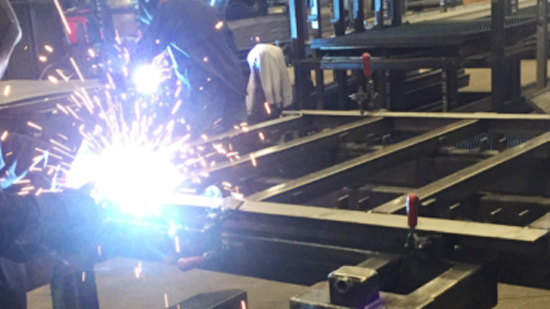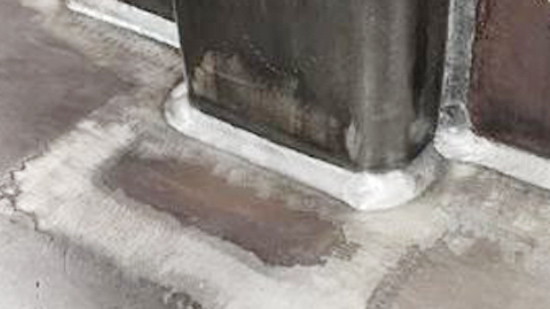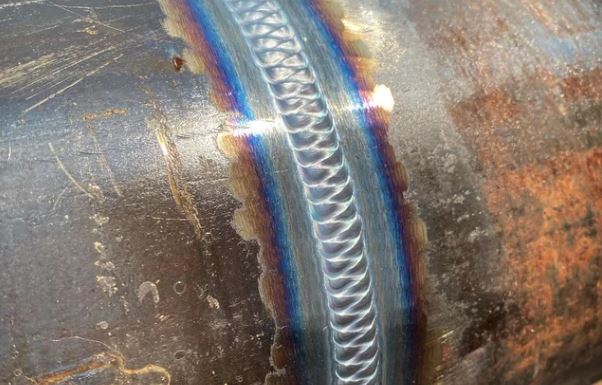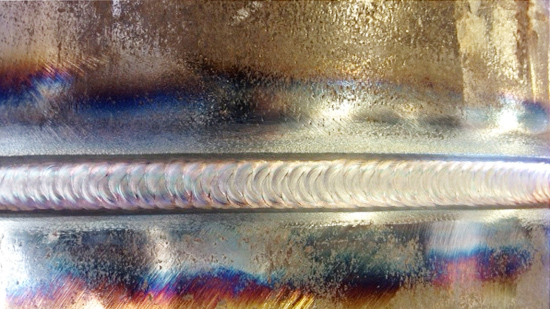Looking to make strong and durable welds with high carbon steel? Welding high carbon steel requires precise techniques and a clear understanding of the material’s properties. In this article, we will guide you through the process, providing you with essential tips and insights to achieve successful welds that meet industry standards.
High carbon steel is known for its toughness and ability to resist wear and tear. However, welding this type of steel can be challenging due to its high carbon content and low heat conductivity. It’s crucial to choose the correct welding method, electrode, and preheating temperature to avoid cracking and brittleness in the welded joint.

Image by weldinganswers
Whether you’re a professional welder or a DIY enthusiast, understanding how to weld high carbon steel can open up a world of possibilities for your projects. So, grab your welding mask and let’s dive into the techniques and best practices that will enable you to wield this tough material with precision and confidence.
What is High Carbon Steel?
High carbon steel, as the name suggests, contains a higher carbon content than other types of steel. This increased carbon content imparts exceptional hardness and strength to the steel but also makes it more challenging to weld. High carbon steel typically has a carbon content ranging from 0.60% to 1.0%.
Properties and Characteristics of High Carbon Steel
High carbon steel possesses several unique properties that make it suitable for specific applications. Firstly, it offers excellent hardness, making it ideal for tools and equipment that require a sharp cutting edge, such as knives and chisels. Additionally, high carbon steel exhibits good wear resistance, making it suitable for components subjected to heavy abrasion or impact.
It’s important to note that high carbon steel is more brittle compared to other types of steel. This brittleness can pose challenges during the welding process, as it increases the risk of cracking and failure in the welded joint. To overcome this, specific welding techniques and precautions need to be followed.
Welding Techniques for High Carbon Steel
When it comes to welding high carbon steel, several techniques can be employed, depending on the application and the desired outcome. Some common welding techniques used for high carbon steel include:
Shielded Metal Arc Welding (SMAW)
Also known as stick welding, SMAW is a popular method for welding high carbon steel. It involves using a consumable electrode coated with flux to create the weld. SMAW provides good control over the welding process and is suitable for both thick and thin high carbon steel.
Gas Metal Arc Welding (GMAW)
GMAW, commonly referred to as MIG welding, is another effective technique for welding high carbon steel. It uses a continuous wire electrode and a shielding gas to protect the weld from atmospheric contamination. GMAW is versatile and can be used for both thick and thin high carbon steel.
Flux-Cored Arc Welding (FCAW)
FCAW is a variation of MIG welding that uses a tubular wire filled with flux. This flux creates a shielding gas when heated, protecting the weld from impurities. FCAW is suitable for high carbon steel welding, especially in outdoor or windy conditions, as it provides better protection against atmospheric contamination.
Preparing High Carbon Steel for Welding
Proper preparation of high carbon steel is crucial to ensure successful welds. Here are some essential steps to follow before welding:
Clean the surface
Remove any dirt, oil, rust, or mill scale from the surface of the high carbon steel using a wire brush or grinder. This helps create a clean welding surface and improves the quality of the weld.
Preheat the steel
High carbon steel has low heat conductivity, which means it requires preheating before welding. Preheating minimizes the temperature difference between the base metal and the weld, reducing the risk of cracking. The preheating temperature will depend on the specific grade of high carbon steel being welded and should be determined based on industry guidelines.
Use the correct filler material
Selecting the right filler material is crucial for welding high carbon steel. It’s recommended to use electrodes specifically designed for high carbon steel welding, as they have the appropriate composition to match the base metal and minimize the risk of cracking.
Choosing the Right Welding Process for High Carbon Steel
Choosing the correct welding process is essential for achieving high-quality welds on high carbon steel. Factors to consider when selecting a welding process include the material thickness, joint design, and the desired strength of the weld. As mentioned earlier, SMAW, GMAW, and FCAW are commonly used welding processes for high carbon steel. Each process has its advantages and limitations, so it’s important to assess the specific requirements of your project before making a decision.
Tips for Successful Welding of High Carbon Steel
To ensure successful welding of high carbon steel, consider the following tips:
Maintain proper heat control
High carbon steel is sensitive to heat, so it’s essential to maintain proper heat control during the welding process. Avoid excessive heat input, as it can lead to brittleness and cracking. Use short bursts of welding and allow the material to cool between passes.
Control the cooling rate
Controlling the cooling rate is crucial to prevent cracking in the welded joint. Avoid rapid cooling by using techniques such as peening or post-weld heat treatment. These methods help relieve residual stresses and improve the overall integrity of the weld.
Perform thorough inspections
After welding, perform thorough inspections to check for any defects or imperfections. This includes visual inspections, non-destructive testing, and mechanical testing, if necessary. Address any issues promptly to ensure the weld meets the required standards.
Common Challenges and Troubleshooting
Welding high carbon steel can present various challenges, including cracking, distortion, and poor weld quality. Here are some common issues and troubleshooting tips to help you overcome them:
Cracking
Cracking is a significant concern when welding high carbon steel. To prevent cracking, ensure proper preheating, control the heat input, and use the correct filler material. Implementing techniques like peening and post-weld heat treatment can help relieve residual stresses and minimize the risk of cracking.
Distortion
High carbon steel is prone to distortion due to its high carbon content and limited heat conductivity. To minimize distortion, use proper clamping and fixturing techniques to hold the workpiece in place during welding. Consider using tack welds or backstepping techniques to distribute the heat and control distortion.
Poor weld quality
Poor weld quality can result from various factors, including improper cleaning, insufficient heat control, and incorrect filler material. Ensure proper surface preparation, maintain optimal heat control, and use the appropriate filler material to achieve high-quality welds.
Safety Precautions when Welding High Carbon Steel
Welding high carbon steel involves working with high temperatures, sparks, and hazardous fumes. To ensure your safety during the welding process, follow these safety precautions:
Wear appropriate personal protective equipment (PPE)
This includes a welding mask, safety glasses, welding gloves, and flame-resistant clothing. PPE protects against sparks, UV radiation, and heat.
Ensure proper ventilation
Welding produces harmful fumes and gases. Ensure adequate ventilation in the workspace to remove these pollutants and maintain air quality. If working in an enclosed area, consider using ventilation systems or wearing a respirator.
Avoid welding in flammable environments
High carbon steel welding involves open flames and sparks, which can ignite flammable materials. Clear the work area of any flammable substances and ensure a fire extinguisher is readily available.
Post-Welding Considerations for High Carbon Steel
After welding high carbon steel, there are several post-welding considerations to keep in mind:
Allow for proper cooling: Allow the welded joint to cool naturally to room temperature. Rapid cooling can lead to increased brittleness and potential cracking.
Perform post-weld heat treatment: Depending on the specific application, post-weld heat treatment may be necessary to relieve residual stresses and improve the overall weld quality. Consult industry guidelines or a metallurgical expert for recommendations.
Perform post-weld inspections: After cooling, perform post-weld inspections to ensure the weld meets the required standards. This includes visual inspections, non-destructive testing, and mechanical testing if necessary.
Conclusion
Welding high carbon steel requires careful consideration of the material’s properties and specific welding techniques. By understanding the challenges and following the best practices outlined in this article, you can achieve successful welds with high carbon steel. Remember to prioritize safety, choose the appropriate welding process, and follow proper preparation and post-welding procedures. With practice and experience, you can master the art of welding high carbon steel and unlock a world of possibilities for your projects.

I’m Darrell Julian, the founder, lead writer, and hands-on welding enthusiast behind ArcWeldingPro.com. With more than 15 years of real-world welding experience, I created this platform to share what I’ve learned in the field, in the shop, and in the heat of the arc.



